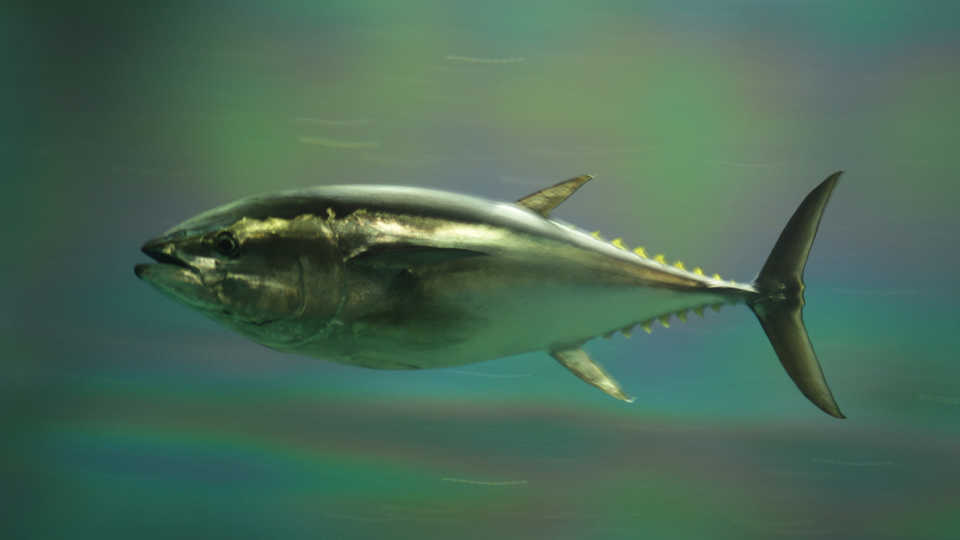Science News
Follow the Fish

To protect an animal, scientists and conservationists need to understand the organism completely—its physiology, diet, movement, behavior and more. And that’s just what researchers from Stanford, the Monterey Bay Aquarium, and the National Oceanic and Atmospheric Administration (NOAA) have done with Pacific bluefin tuna. These apex predators are listed as vulnerable on the IUCN’s Red List, and are incredibly important to our coastal ecosystem, so understanding how and where they eat can help inform conservation policies.
The scientists tagged many bluefin tunas—more than 500—along the coast of southern California and Baja to track the fishes’ migration patterns, but also to monitor the surrounding water temperature as well as the fishes’ body temperature and diving patterns. Why all the measurements? Tunas are unusual for fish: they are warm-bodied. “Bluefin tuna are the pinnacle of bony fish evolution, endothermic or warm-bodied in a manner that rivals the metabolic performances of birds and mammals,” says Stanford’s Barbara Block, senior author of a study published last week in Science Advances.
Through the bluefin’s thermoregulation, when measuring changes in a fish’s body temperature, scientists can also measure their energy intake, and understand the tuna’s daily foraging habits.
One-third of the 500 tags were recovered, and some of the data records covered up to three years of a fish’s life! The team charted the amount of food and total energy consumed as the fish traveled long distances, finding that the tuna consumed prey 90 percent of the time.
Interestingly, the study showed that there was a potential trade-off between feeding in the richest areas and avoiding the physiological constraints associated with feeding in very cold (which slows the heart) or warm (energetically taxing) waters. This answered a long-standing question about the species’ traditional limits in range, from north of Oregon to south of the Baja Peninsula, despite the fact that close relatives of bluefin (yellowfin and albacore tuna) thrive outside of those latitudes.
Whenever the bluefin digest a meal, the fish tend to stay in waters that allow it to remain at an optimum temperature to promote rapid digestion of the meal. Too high or too low an environmental temperature, and the increased demands of digestion can strain the cardiovascular system. This optimal digesting temperature effectively confines the species’ range. “Digestion is metabolically costly, and the bluefin are doing it most efficiently,” Block says.
Block calls this portion of the ocean the “Blue Serengeti,” an open ocean ecospace where currents concentrate nutrients and plankton, attracting forage fish such as sardines or anchovy, which in turn lure larger fish such as bluefin tuna. “Our results add to our understanding of predator-prey dynamics in the California current,” Block says. “By understanding where bluefin forage most, we can help protect these places and improve efforts to rebuild Pacific bluefin tuna stocks.”
Image: aes256/Wikipedia